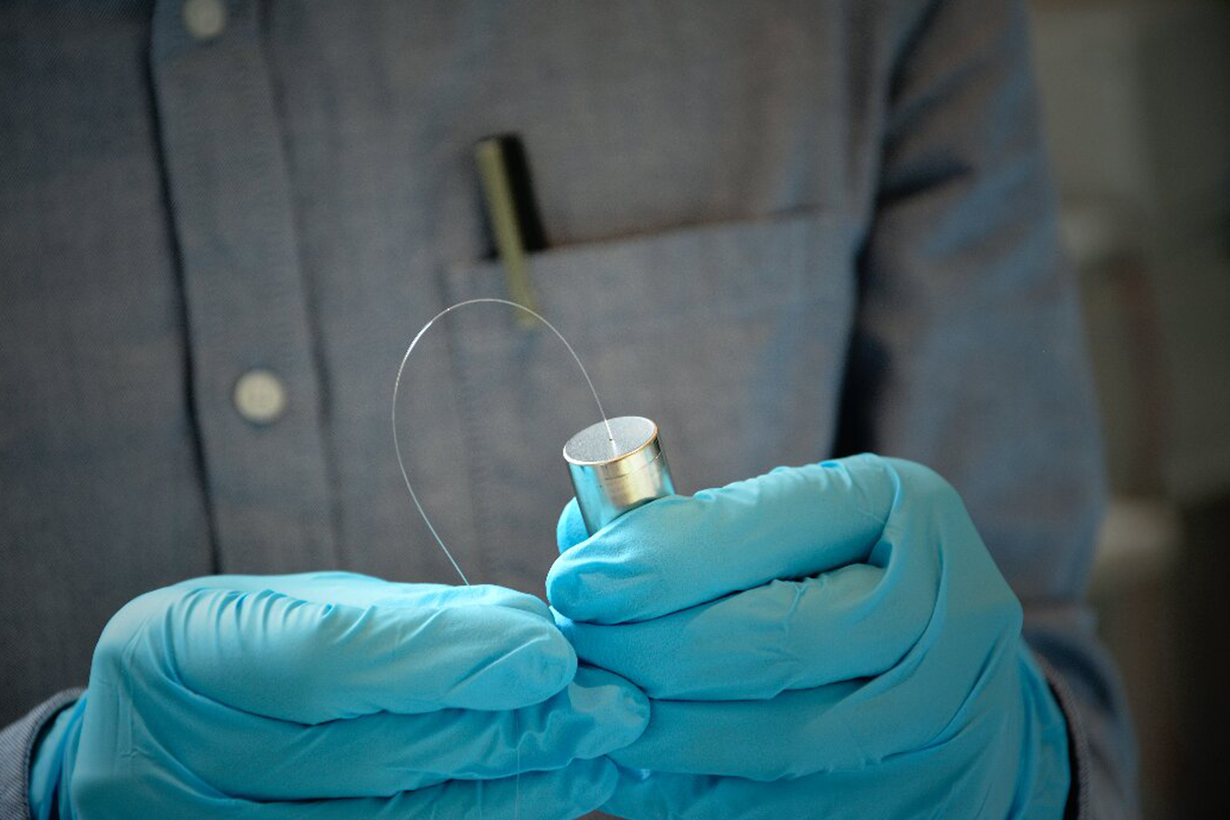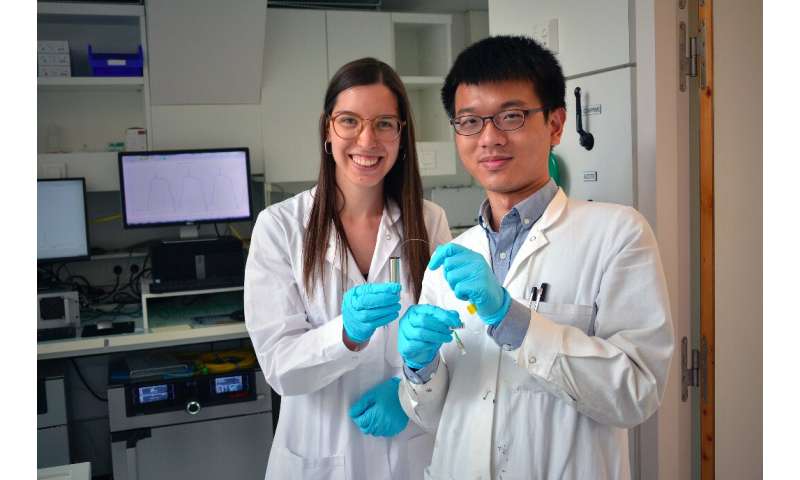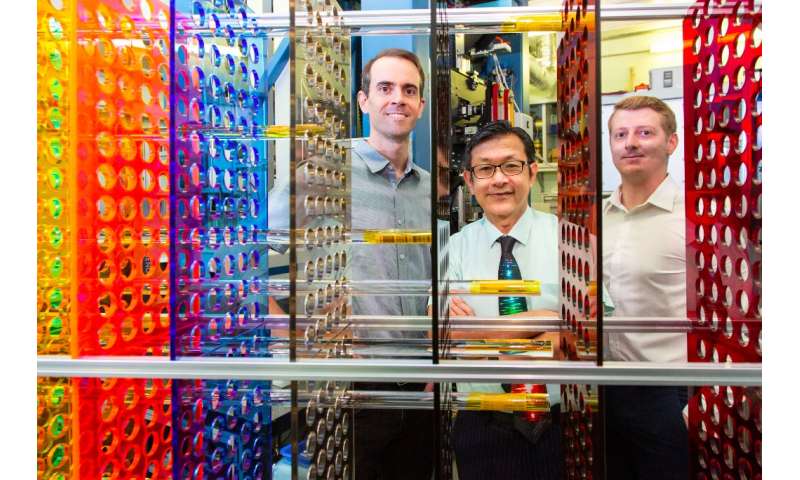CLOSE
About Elements
TANAKA is a leading company in the field of precious metals.
Advanced materials and solutions that support societal progress, the development stories behind them, the voices of engineers, and our management philosophy and vision—
Elements is an online media platform that shares insights that lead to a better society and a more prosperous future for the planet under the slogan “Mastering Precious Metals.”

Commercial battery cells that can monitor their own chemical and thermal state

Battery technology can sometimes be unstable and volatile, two characteristics that impair its safety and reliability. Actively monitoring the chemical and thermal state of battery cells over time could help to detect changes that may cause incidents or malfunctions, giving users the chance to intervene before a problem arises.
Researchers at Collège de France and Hong Kong Polytechnic University have recently designed a Na(Li)-ion battery that can monitor its own chemical and thermal state via a series of optical sensors integrated in its cells. This unique self-monitoring battery, presented in a paper published in Nature Energy, could provide greater safety and a more sustained efficiency compared to conventional battery technologies.
“The idea for our recent study came to me about three or four years ago, when I wrote a prospective in Nature Materials titled ‘Sustainability and in situ monitoring in battery development,'” Jean-Marie Tarascon, one of the researchers who carried out the study, told TechXplore. “While reviewing previous studies, I realized that the ratio between the performance and cost of Li-ion batteries has improved so much over the past few years (i.e., recently developed Li-ion battery technology performs really well and is affordable). As this ratio is already more than satisfactory, I decided to focus my future research on trying to improve the reliability and safety of batteries, rather than on the development of alternative aqueous or non-aqueous battery chemistries.”
While conducting some of his previous research, Tarascon started considering the possibility of developing an “intelligent” battery with sensing and self-healing capabilities. His hypothesis was that deviating from classical battery technology designs and introducing a sensing component within a battery could ultimately enhance its lifetime or provide a second “life,” decreasing the technology’s overall carbon footprint.

An optical fibre sensor (about 150 microns in diameter) is inserted into a cylindrical cell (18650 format). By placing the optical fibre directly into the center of the cell, the sensor can monitor internal temperature and pressure with unprecedented accuracy. Credit: Collège de France – Benjamin Campech, RS2E.
To create this battery, Tarascon and his colleagues integrated optical fiber Bragg grating sensors into commercial 18650 Na(Li)-ion cells. These sensors act as a wavelength-selective mirror, as the information they collect is essentially a reflected wavelength peak. The position of this peak changes in real time due to temperature and/or pressure variations in the sensor’s surroundings.
The unique battery design introduced by the researchers enables the real-time tracking of chemical and thermal events occurring inside a battery. Tarascon and his colleagues are also among the first to successfully measure the heat generated inside a cell without using microcalorimetry, but instead via a series of sensors.
“What is truly new here is our new approach to decouple the temperature and pressure signals by combining a microstructured optical fiber and a normal optical fiber,” Tarascon said. “The key advantages of our approach include its feasibility to decode battery chemical and thermal events with great reliability and accuracy.”

Dr Jiaqiang HUANG (right) and Dr Laura Albero BLANQUER of Collège de France are the first author and second author of the collaborative study respectively. Credit: Collège de France – Benjamin Campech, RS2E.
Tarascon and his colleagues demonstrated the feasibility of measuring heat generation and transfers occurring inside a battery with extremely high accuracy. These are two critical parameters for the development of efficient and reliable cooling/heating systems. Therefore, their work could pave the way to the development of more advanced battery management systems (BMS) that better protect batteries from overheating.
The design also enables the retrieval of vital chemical information from inside a cell. This information could enhance the current understanding of parasitic reactions that affect the functioning of battery technologies, such as the formation and composition of the solid electrolyte interphase (SEI).
“These interfaces ultimately shape the cell’s lifetime,” Tarascon said. “The protocols to form them are closely guarded trade secrets among manufacturers. As such, our way of simply monitoring the formation of these interphases by FBG’s, besides being totally new, is a critical asset for the battery industry because the SEI formation is a crucial and expensive step prior putting the cells into the market.”

(From the left) Dr Steven BOLES, Associate Professor, Department of Electrical Engineering, PolyU; Prof. Hwa-yaw TAM, Chair Professor of Photonics and Head of Department of Electrical Engineering, PolyU; and Dr Julien BONEFACINO, Postdoctoral Researcher of PolyU. Credit: The Hong Kong Polytechnic University.
The study opens up exciting and unprecedented opportunities within the field of battery development, both at an academic and industrial level. In the future, their design could serve as an example for other teams worldwide, leading to the development of safer and more reliable batteries.
“We are presently implementing the use of FBGs to the exploration of other battery chemistries so as to decipher/identify parasitic reactions contributing to the SEI formation at various temperatures and state of charges,” Tarascon said. “Application-wise, we are also working on adapting the FBG sensors to the targeted battery environment in terms of manufacturing constraints, together with identifying the proper transfer functions and modeling tools to wisely use the sensing information read-out at the cell so as to develop sophisticated BMS.”
Explore further
Scientists get a sneak peek of a key process in battery ‘life’
More information: Jiaqiang Huang et al. Operando decoding of chemical and thermal events in commercial Na(Li)-ion cells via optical sensors, Nature Energy (2020). DOI: 10.1038/s41560-020-0665-y
C. P. Grey et al. Sustainability and in situ monitoring in battery development, Nature Materials (2016). DOI: 10.1038/nmat4777
© 2020 Science X Network
Citation: Commercial battery cells that can monitor their own chemical and thermal state (2020, September 28) retrieved 28 September 2020 from https://techxplore.com/news/2020-09-commercial-battery-cells-chemical-thermal.html
This document is subject to copyright. Apart from any fair dealing for the purpose of private study or research, no part may be reproduced without the written permission. The content is provided for information purposes only.
This article was from Tech Xplore and was legally licensed through the Industry Dive publisher network. Please direct all licensing questions to legal@industrydive.com.







